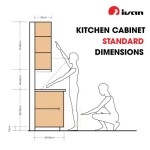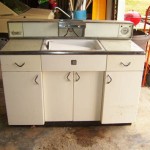How to Remove Kitchen Appliances Safely and Effectively
Removing kitchen appliances can be a necessary task for various reasons, including renovations, replacements, or disposal of old units. The process requires careful planning, adherence to safety precautions, and the proper tools to avoid injuries or property damage. Before commencing any appliance removal, it is imperative to understand the appliance's functionalities, power sources, and potential hazards.
This article provides a comprehensive guide on how to remove kitchen appliances safely and effectively. It covers essential preparation steps, specific removal techniques for common appliances, and important considerations for disposal or storage. By following these guidelines, individuals can minimize risks and streamline the appliance removal process.
Preparation is Key: Before You Begin
Prior to dismantling or moving any kitchen appliance, adequate preparation is crucial. This involves several key steps designed to ensure safety and efficiency.
1. Disconnect Power and Utilities: This is the single most important safety step. For electrical appliances, locate the circuit breaker that controls the appliance's power supply and switch it off. Verify that the power is indeed off by testing the appliance's functionality (e.g., attempting to turn it on). For gas appliances, turn off the gas supply valve located near the appliance. If unsure about the valve's location or operation, consult a qualified gas technician. Water lines must also be disconnected for appliances such as dishwashers and refrigerators with ice makers or water dispensers. Locate the shut-off valve (usually under the sink or behind the appliance) and turn it off. After turning off the water supply, open the appliance’s water line to relieve any remaining pressure.
2. Gather Necessary Tools and Equipment: Having the right tools on hand will make the removal process much smoother and safer. Essential tools include:
- Screwdrivers (various sizes and types, including Phillips head and flathead)
- Adjustable wrench
- Pliers
- Utility knife
- Work gloves
- Safety glasses
- Appliance dolly or furniture sliders
- Moving blankets or protective padding
- Trash bags or containers for debris
3. Clear the Surrounding Area: Create a clear pathway from the appliance's location to the exit. Remove any obstacles, such as furniture, rugs, or decorations, that could impede movement or pose a tripping hazard. Cover the floor with protective material, such as cardboard or drop cloths, to prevent scratches or damage during the removal process. Ensure adequate lighting to provide clear visibility throughout the work area.
4. Consult the Appliance's Manual: The manufacturer's manual often contains specific instructions and diagrams relevant to the appliance’s removal. Reading the manual can provide valuable insights into potential challenges or specific steps required for safe disassembly. If the manual is unavailable, search for it online using the appliance's model number.
5. Request Assistance: Many kitchen appliances are heavy and awkward to maneuver. Enlisting the help of one or more assistants can significantly reduce the risk of injury and make the removal process easier. Coordinate movements and communicate clearly to ensure safe handling of the appliance.
Specific Appliance Removal Techniques
The removal process varies depending on the type of appliance. The following sections outline specific techniques for removing common kitchen appliances.
1. Refrigerator:
a. Empty the refrigerator: Remove all food items from the refrigerator and freezer compartments. Dispose of any perishable items that are no longer safe to consume. Defrost the freezer compartment if necessary. Some refrigerators have automatic defrost settings, while others may require manual defrosting. Place towels or containers to catch any melting ice or water.
b. Disconnect water and ice lines: If the refrigerator has an ice maker or water dispenser, disconnect the water supply line. Locate the shut-off valve (usually behind the refrigerator or under the sink) and turn it off. Disconnect the water line from the refrigerator fitting. Have a container ready to catch any remaining water in the line. Discard or store the ice maker components according to the manufacturer's instructions.
c. Disconnect power: Unplug the refrigerator from the electrical outlet. Secure the power cord to the back of the refrigerator to prevent it from dragging during movement.
d. Secure the doors: Use tape or rope to secure the refrigerator doors closed. This will prevent them from swinging open during transportation and potentially causing damage.
e. Move the refrigerator: Use an appliance dolly to move the refrigerator. Tilt the refrigerator slightly and slide the dolly underneath. Secure the refrigerator to the dolly with straps. Slowly and carefully move the refrigerator to its destination, ensuring that the pathway is clear and free of obstacles.
2. Dishwasher:
a. Disconnect power: Turn off the circuit breaker that controls the dishwasher's power supply. Verify that the power is off by testing the dishwasher's controls.
b. Disconnect water lines: Locate the water supply and drain lines beneath the sink. Turn off the water supply valve. Disconnect the water supply line from the dishwasher fitting. Disconnect the drain hose from the sink drain or garbage disposal. Have a container ready to catch any remaining water in the lines.
c. Disconnect electrical wiring: Remove the dishwasher's access panel (usually located at the bottom front of the unit). Disconnect the electrical wiring from the dishwasher's terminals. Use wire connectors to safely cap off the exposed wires. Consult a qualified electrician if unsure about the wiring procedure.
d. Remove mounting brackets: Dishwashers are typically secured to the countertop or adjacent cabinets with mounting brackets. Remove the screws or bolts that secure the brackets.
e. Slide out the dishwasher: Carefully slide the dishwasher out of its enclosure. Use furniture sliders or an appliance dolly to facilitate movement. Be mindful of any remaining water in the dishwasher and take steps to prevent spills.
3. Oven/Range:
Gas Oven/Range:
a. Disconnect gas supply: Turn off the gas supply valve located near the oven/range. Verify that the gas is off by attempting to light a burner (if applicable). If uncertain about the valve's operation, consult a qualified gas technician.
b. Disconnect electrical wiring: Some gas ovens/ranges require an electrical connection for the igniter or other features. Turn off the circuit breaker and disconnect the electrical wiring.
Electric Oven/Range:
a. Disconnect power: Turn off the circuit breaker that controls the oven/range's power supply. Verify that the power is off by testing the oven/range controls.
b. Disconnect electrical wiring: Electric ovens/ranges typically have a high-voltage electrical connection. Carefully disconnect the wiring from the oven/range's terminals. Consult a qualified electrician if unsure about the wiring procedure.
Common Steps (Gas & Electric):
a. Remove oven door: Many ovens/ranges have removable doors to facilitate cleaning or maintenance. Consult the owner's manual for instructions on how to remove the door. Removing the door will make the appliance lighter and easier to move.
b. Disconnect vent: If the oven/range is vented to the outside, disconnect the vent pipe from the appliance. Secure the vent pipe to prevent debris from entering the ductwork.
c. Slide out the oven/range: Carefully slide the oven/range out of its enclosure. Use furniture sliders or an appliance dolly to facilitate movement. Be mindful of the appliance's weight and take steps to prevent injury.
4. Microwave Oven (Countertop and Over-the-Range):
Countertop:
a. Unplug from the power outlet.
b. Remove any items inside the microwave.
c. Simply lift and move the microwave to its new location.
Over-the-Range:
a. Disconnect power: Turn off the circuit breaker that controls the microwave's power supply. Verify that the power is off.
b. Remove mounting screws: Over-the-range microwaves are typically secured to the cabinet above with mounting screws. Remove these screws.
c. Disconnect vent: If the microwave is vented to the outside, disconnect the vent pipe from the appliance.
d. Support and detach: With assistance, carefully support the microwave's weight while detaching it from the mounting bracket. Slowly lower the microwave and place it on a stable surface.
Disposal and Storage Considerations
Once the appliance has been removed, decisions must be made regarding its disposal or storage. Responsible disposal practices are essential to minimize environmental impact.
1. Recycling: Many appliances contain recyclable materials, such as metal, plastic, and glass. Contact local recycling centers or waste management companies to inquire about appliance recycling programs. Some retailers offer appliance recycling services when purchasing new appliances.
2. Donation: If the appliance is in good working condition, consider donating it to a charitable organization or resale shop. Many organizations accept donations of used appliances to benefit those in need.
3. Proper Disposal: If recycling or donation is not feasible, dispose of the appliance according to local regulations. Contact the local waste management company for information on appliance disposal procedures. Some appliances, such as refrigerators and freezers, may contain refrigerants that require special handling. Ensure that the refrigerant is properly removed before disposal to prevent environmental damage.
4. Storage: If planning to store the appliance, clean it thoroughly to prevent mold or mildew growth. Wrap the appliance in protective material, such as moving blankets or plastic sheeting, to prevent scratches or damage. Store the appliance in a dry, secure location away from extreme temperatures or humidity. Elevate the appliance off the floor to prevent moisture damage or pest infestations.

How To Get Rid Of Old Appliances Family Handyman

How To Properly Remove Old Appliances In An Easy Way

How To Remove Dispose Of Or Recycle Appliances Appliance Pros

How To Remove A Whole Kitchen B Q
:max_bytes(150000):strip_icc()/clean-small-kitchen-appliances-4153520-05-58415d047a2a49dd87b1e8a1bdb3d6ed.jpg?strip=all)
How To Clean 7 Small Kitchen Appliances

Before And After Kitchen Remodel Remove Appliance Garage Gain Counter Space How To Cabinets Board

Hide And K Kitchen Appliances Superior Cabinet Components

Kitchen Appliance Garage Diy Angela Marie Made

Kitchen Appliance Garage Diy Angela Marie Made
How To Remove Scratches From Stainless Steel Appliances Howstuffworks
Related Posts








